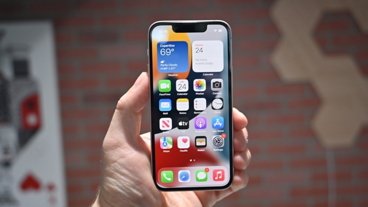Inside MobileMe: iPhone's Exchange alternative for contacts and calendar
MobileMe's Exchange Server-style push updates for contacts and calendar events on the iPhone is entirely new from the previous .Mac. Here's how MobileMe relates to Exchange, how contacts and calendars work, and what's still missing in Apple's service related to calendar and contact management.
Inside MobileMe: iPhone Mail (Tuesday)
Inside MobileMe: iPhone's Exchange alternative for contacts and calendar (Today)
Exchange for the rest of us
Shortly after the launch of MobileMe, Apple admitted that it may have oversold its new service as being an alternative to Exchange. After all, there is no mechanism for instant push from desktop apps to the cloud; Exchange is an always-on groupware server. Apple even pulled its "Exchange for the rest of us" line from its MobileMe marketing. However, the iPhone's calendar and contacts do currently perform push updates in both directions. Make a change on your iPhone, and you should see the update immediately on your Mac desktop and from the MobileMe web apps.Â
For iPhone and iPod touch users, that means MobileMe remains an "Exchange for the rest of us." As we noted in the segment on pricing comparisons, MobileMe offers a ground breaking level of service at a very competitive price, significantly lower than hosted Exchange Server plans that deliver far less storage space and don't provide WebDAV file and web hosting at all, nor MobileMe's other data synchronization features between linked computers. Â
In terms of reliability, while MobileMe is still less than a month old the new service now seems responsive and usable, although we'd warn users not to expect more from the service than they would from other consumer-oriented online services such as those from Google, Yahoo, or Hotmail. There's still additional features we'd like to see implemented, and Apple intends to invest in regular updates to ensure that the program is "a service we are all proud of by the end of this year." If Apple is able to reach that goal over the next five months, it will certainly accomplish more than just delivering "an Exchange for the rest of us."Â
The long road to Exchange
In comparison, Microsoft's Exchange Server began limited internal testing in 1993, and was only launched publicly in the middle of 1996. It would have been a real stretch to describe it as a reliable product anyone could be proud of until at least four and a half years later with the year end release of Exchange Server 2000.Â
In the last eight years since, Exchange has seen two major updates, and has now achieved a reputation of being difficult to match in features and broad support. It typically competes against IBM's Lotus (Notes) Domino Server on the high end and Kerio MailServer among smaller businesses looking for a more affordable solution with similar features.Â
Where there are many other mail-only servers, the options for comprehensive messaging servers that supply calendaring and contact updates (particularly those that push to mobile devices) are harder to find. That makes Apple's consumer-oriented MobileMe a pioneering new service for the industry, not just Apple. The company still has "a lot to learn" as Steve Jobs recently admitted in response to the high-profile launch problems that dogged its release, but it is well ahead of the game in delivering a service that works for consumers, is easy to setup and use, and is priced affordably.
Contacts and calendar events are specialized emails
Exchange Server pioneered the market for standardized corporate groupware alongside Lotus Notes, which was acquired by IBM in 1995. Exchange intended to adopt the ISO's ITU X-400 standard specification for email messaging servers, but just as Microsoft was bringing it to market, the ISO's IT-related standards bureaucracy was broadsided by rapid new innovation among Internet Engineering Task Force groups.Â
The practical IETF working group protocols beat the grandiose technology definitions outlined by ISO committees, leaving Exchange built around a dead-end architecture. Microsoft was forced to tack on an Internet Mail Connector to provide messaging interoperability with other standard mail transport servers on the Internet. While Internet standards quickly emerged on how to pass email between internet servers and to simple email client programs (including POP and IMAP), there were no functional standards that developed around how to pass around calendar and contact information.Â
Microsoft invented its own Messaging API, which treated contacts and calendar events as specialized email messages. The contacts and calendar folders in Exchange are simply mailboxes of emails that contain data that are interpreted by Outlook and represented as address book or calendar items. As with most other internal standards originated by Microsoft, the implementation was not intended to be widely interoperable. Instead, the MAPI specification rapidly changed in concert with every new release of Exchange and Outlook, making it difficult for third parties to offer fully compatible replacements to either Exchange or Outlook.Â
Microsoft began taking steps away from MAPI when it released Entourage for the Mac as a non-MAPI client to Exchange. It uses standard IMAP to talk to Exchange, which allowed Microsoft to retain the same model of contacts and calendar items as specialized emails while abandoning its oddball message passing system. To talk to mobile devices, Exchange similarly communicates by using semi-standard web updates through Exchange's Outlook Web Access web app rather than trying to spray MAPI commands over the open Internet. This type of connection is referred to as Exchange ActiveSync or EAS.Â
Apple and Exchange Server support
In order to make Macs more friendly with enterprise environments using Exchange, Apple has been adding Exchange support features to its desktop Mac OS X apps. Mail has long been able to automate the configuration of an IMAP connection to Exchange (provided the administrators enable IMAP on the server), and Address Book gained the ability to sync local contacts with Exchange via Outlook Web Access (below). Apple has not released support for iCal to directly sync with Exchange, but third party utilities do support bidirectional calendar sync for iCal. Mac OS X Snow Leopard is expected to provide complete, native support for syncing desktop data with Exchange using the same EAS technology Apple licensed for use with the iPhone.
Apple had been leaving Mac desktop Exchange support up to Microsoft with Entourage, but that product is regarded as a poor substitute to Outlook and has not made satisfactory progress in catching up over the last several years. Handling the Mac's Exchange support itself mirror's Apples strategy of supporting Microsoft's Office filetypes in iWork. Rather than being left at the mercy of third party developers, Apple now owns its own implementation of EAS sync with Exchange.
MobileMe uses its own sync technology between Mac OS X desktop apps and the cloud, and uses a unique mechanism for pushing updates down to client computers. The mobile push messaging system for the iPhone is also custom to Apple, although it results in similar functionality to EAS.
On page 2 of 3: iPhone MobileMe contacts; and Missing in contacts.
Syncing contacts seems like it should be fairly straightforward; after all, you're just shuffling around digital business cards. There are some complications involved however. What fields do you sync, and what custom fields can you add on either end of the sync? What happens when third parties need to tack on additional fields?
Apple considered some of these problems back at the original launch of Mac OS X, which debuted with a new Address Book application. Many wondered why Apple was eating into the market for contact managers, as many users at the time already had their contacts in Palm Desktop (formerly Apple's own Claris Organizer), Microsoft's Outlook Express or Entourage, or various other third party tools.Â
Centralized contacts was a new idea for a desktop OS. As time went on, the logic behind putting everything contact-related in one place became increasingly obvious. It allowed third party developers to draw upon that central pool of contacts, update them, and even add fields, without the mess of each program using its own contact database and then being unable to export or import from others. By that time, Microsoft had designed multiple contact managers on the PC, with at least one for Outlook and one for Office and some clumsy connections between them. Apple's unified Address Book turned contact management into a streamlined OS-level service that was able to later tie into Sync Services. The idea was good enough to be adopted by Windows Vista in the new Windows Contacts.
Address Book on Mac OS X displays a number of default fields (below right), and allows you to add additional fields, such as adding an anniversary, phonetic name, job title, nickname and so on (below left, the Add Field popup list). Developers can also add their own data to the contact pool that Address Book draws upon, although those fields won't show up in the Address Book app. FileMaker's Bento does this, as does Marware's Project X. MobileMe syncs Address Book's contacts up to the cloud and pushes updates back down to the iPhone. Photos added from the iPhone's camera, as well as photos attached in Address Book, are also synced up.
Missing in contacts
There's no way to select only a subset of specific contact groups you'd like to sync with MobileMe. This is a feature drop compared to regular iTunes syncing, which allowed you to sync specific groups. Where would you configure which contact groups to sync? Some users might want to sync all their desktop contact groups to MobileMe, but only a specific subset to their iPhone. This would require some interface complexity in System Preferences : MobileMe, or a settings interface within the Contacts web app, or a setting in Address Book, as iTunes is no longer managing contact sync under MobileMe.
Another rough spot for contacts on the iPhone is that it's not always brilliantly easy to create a new contact or add a phone number to an existing contact. For example, Safari, Mail, and some other apps hyperlink numbers that look phone numbers, but if you tap them, you only have the option to dial the number. There's no way to add the number as a new contact, add it to an existing contact, or use it to start a new SMS. On the other hand, once a number has been dialed you can, from a recent calls listing (below), either call, text message, create a new contact, or add to an existing contact. It would be nice to have those options without actually making a call first.
There is at least one field supported on the iPhone that does not show up in Address Book on the desktop: a Ringtone field. The resulting problem is that when you sync, the settings you've entered on the iPhone for custom ringtones may be wiped out. Some additional fields that can be added in Address Book are not synced to the phone, such as the "friend's name" field. Other optional fields such as job title are synced and display on the iPhone. If you select Add Field from the iPhone's contact edit screen (below), you can find a list of optional fields that are supported by MobileMe sync. Fields in Address Book outside of that list won't sync, but "friend" and "maiden name" seem to be the only non-synced fields.Â
In the other direction, the IM fields in Address Book do not show up on the iPhone, but are synced up and visible from the MobileMe Contacts web app. Of course, there's currently no use for having IM fields on the iPhone, as Apple does not provide its own iChat for the iPhone, and IM apps such as the free AIM client download your buddy list from AOL's servers rather than accessing them from Contacts on the iPhone. This also means your friendly names you see in iChat are missing from AIM on the iPhone, and you have to remember their AIM handles.Â
The iPhone maintains a recent call listing that appears to tag the contact listing with the time and date of calls, but this data is not synced back to the desktop Address Book either. We'd like to see this as an option as a way to audit and keep track of your phone calls over time. Also missing: there's no way to create a new contact group on the iPhone or to move a contact to an existing group. You also can't address emails to a contact group as a mailing list.
One last problem between Address Book and the iPhone is that Address Book only has a global preference for mailing address format, which assumes all of your contacts are from the same country. The default US format supplies a Country field, but entering a different country has no impact on how the address is displayed; you still get City State Zip. On the iPhone however, you can't type in a country name; you have to select it from the list of around 60 countries. When you select the country, it reconfigures the address to that country's standard, such as Postal Code City State for Mexico or City County Post Code for the UK (below). Address Book should work the same way (and perhaps intelligently fill in the Zip for you, or the City and State from a Zip, as long as we're asking for things). International iPhone entries sync over to Address Book with their formatting intact. Address Book entries may show up defaulting to the US on the iPhone however.Â
On page 3 of 3: iPhone MobileMe calendar; Missing in calendar; and Apple's Calendaring Strategy.
Calendar sync is a bit more complicated still. The iPhone 2.0 software introduced support for multiple calendars to the iPhone, which while being standard in iCal for some time is still unique among many smartphones.Â
While iCal has been around for years on the Mac desktop, it previously just drew calendars for the .ics "iCalendar" files it created or imported. In Mac OS X Leopard, Apple added a centralized calendar store that does for events what Address Book did for contacts; developers can add events to iCal and use it as an OS-level service. Leopard's Mail demonstrated this feature by integrating ToDo events that could be created from dates appearing in emails. Mail creates a ToDo event directly in an iCal calendar rather than tracking the events itself, making those events available to any other app that also draws upon iCal's calendar store.Â
Windows Vista also now offers a centralized Windows Calendar, although it does not seem to be finished yet, and neither iTunes nor Vista's native sync for Windows Mobile can sync to it. There are also some issues in syncing with Outlook, which iTunes can do. Those problems are related to peculiarities in Outlook or limitations in EAS that some MobileMe reviewers have blamed on Apple for not being able to "overcome." One example is that EAS does not properly sync the read status on emails, either on the iPhone or on Windows Mobile. The Mac does make for a better sync environment for MobileMe due to its clean and modern APIs for contact and calendar stores.
The iPhone syncs events with the desktop occurring over the last month by default, but offers the ability to only sync the last two weeks or alternatively the last three or six months back, or all events in the calendar. More events means longer syncing. Like the new version of iCal, the calendar on the iPhone also supports time zone support on events, so even if you travel into a different time zone, your existing events will remain in the zone they were assigned. If you turn this off, events will be displayed in the local time zone. With time zone support, a meeting scheduled at 10 AM PST won't change as you travel to New York, but a reminder to wake up a 6 AM would need to be set to "floating" rather than a time zone (below).Â
Missing in calendar
The desktop iCal supports a number of features missing on the iPhone, starting with To Do items, which sync with MobileMe but are not presented on the iPhone at all. These reminder events are a critical element to still be missing from the iPhone. As noted under the section on contacts, there's also no facility for only syncing specific calendars from iCal to the iPhone, which seems to be a more pressing feature than selective sync of contact groups.Â
Also missing is support for subscriptions, which draw events from a web hosted .ics file and update automatically as the feed owner makes changes. MobileMe currently simply ignores any subscriptions, and won't even sync its items over to the iPhone as a static synced calendar; you have to export subscribed calendar items into a standard calendar to get them on the iPhone, which runs counter to the idea of the subscription. Apple made a big deal about iCalendar subscriptions in iCal when it released the feature, so the lack of support on the iPhone is odd.
There is also no weekly view on the iPhone's calendar, but this would be difficult to cram into the iPhone's screen, particularly if you expected to maintain the ability to edit items. Conversely, the iPhone does have a list view, which offers a handy flat listing of events that is missing in iCal. And while events appear at the correct time, there is currently no ability to view or set time zone (below; or see if it's set to a floating time stamp, as above).Â
While iPhone can respond to meeting requests sent from Outlook, there's currently no way to create meeting requests from the iPhone (invite other users and request an response). This feature was pulled after the initial beta releases. There's also no color-coded indication that a calendar event is marked as busy, free, or tentative. You can't delete a single occurrence of a repeating event, only the entire series. You also can't access the attached files on an iCal event, or view or change attendees or the URL field set in iCal.Â
While the iPhone supports using multiple calendars, you can't create new ones on the iPhone itself. You also can't reconfigure the colors used by each calendar, and some users have reported having their color coded calendars not matching between the iPhone, web, and desktop. If this happens, resycing should solve the problem. Â
Apple's Calendaring Strategy
Overall, MobileMe's Exchange-like features on the iPhone compare pretty well to Windows Mobile devices, but there are still a number of missing features that need to be addressed. For an initial release, the software seems stable and well designed, although heavy calendar users will be left wishing for some additional sophistication.Â
Apple's interest in calendaring on the Mac desktop remained stuck with a disappointingly simple placeholder version of iCal for years. However, once Apple dumped Meeting Maker as its corporate calendar and actually began using iCal, it rapidly improved into a product worth using. As Apple pushes the iPhone into the enterprise, calendar features will be on the top of the list for improving. Calendaring also plays a big role in Apple's Mac OS X Server strategy with its open source Calendar Server.Â
In the next Inside MobileMe segment, we'll take a closer look at Apple's web apps.
 Prince McLean
Prince McLean






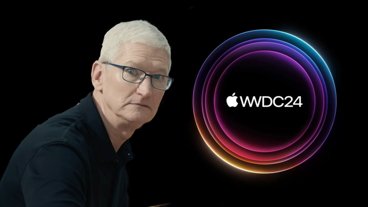
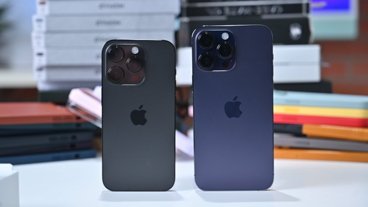


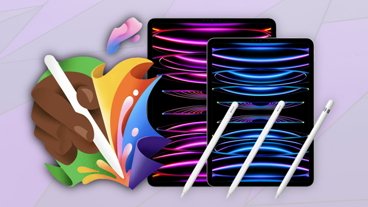
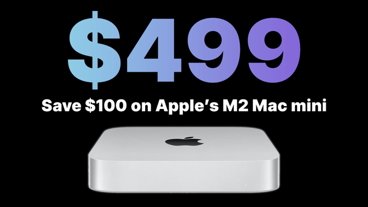




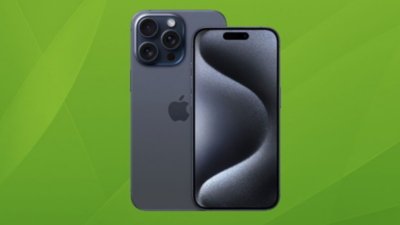
 Chip Loder
Chip Loder
 Andrew Orr
Andrew Orr
 Marko Zivkovic
Marko Zivkovic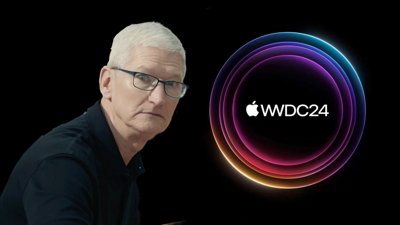
 David Schloss
David Schloss

 Malcolm Owen
Malcolm Owen

 William Gallagher
William Gallagher

